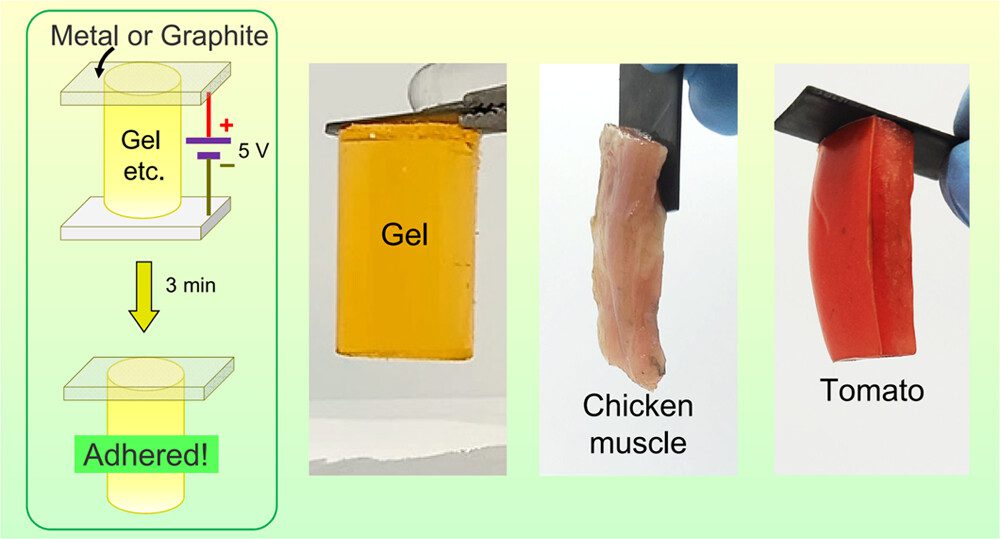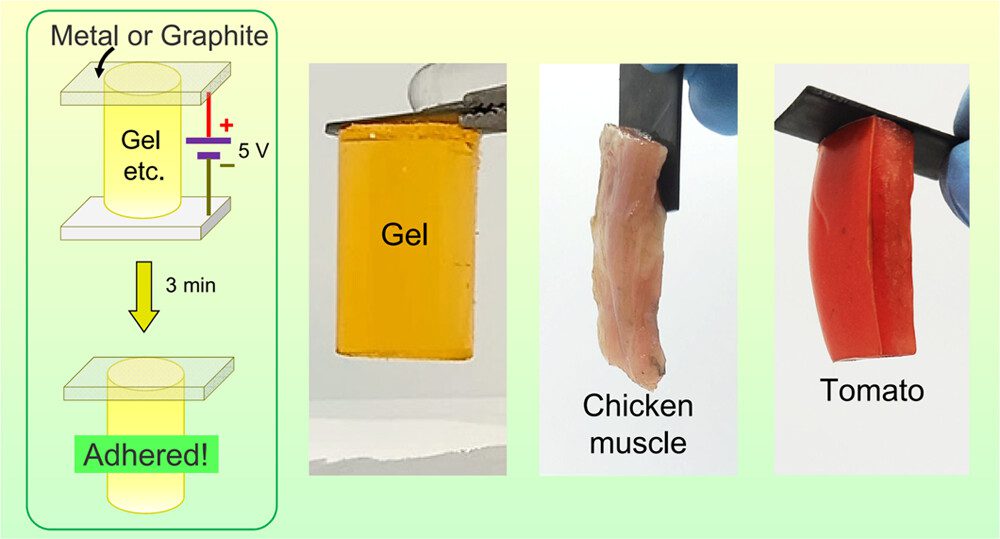
Researchers at the University of Maryland have come up with a new way to bind materials together without using traditional adhesives. Instead of glue, this method uses the power of electricity. electricityBy applying a small voltage, the researchers demonstrated the ability to securely connect hard and soft objects. This non-stick approach also has the advantage of being completely reversible. By reversing the direction of the electron flow, the two objects can be easily and immediately separated.
However, this method is not meant to replace superglue just yet. It is intended for specific applications, like biohybrid robots, improved biomedical implants, and advanced battery technologies.
The Power of Electroadhesion
The new technique takes advantage of a fascinating phenomenon known as electroadhesion (EA), or the Johnsen–Rahbek effect. In the 1920s, two Danish engineers, Frederik Alfred Johnsen and Knud Rahbek, found that when a special type of porous material was placed between two metal plates and a significant electrical voltage was applied, the material would stick to one of the plates.
This voltage causes the materials to stick together through a process called polarization. In simpler terms, the molecules within these materials rearrange to create a force that pulls the two surfaces together. This force is not limited to specific types of surfaces and can occur with conductors, semiconductors, and even insulators. The strength of the adhesive force can vary based on whether the material behaves more like an insulator or a conductor, leading to different types of forces being involved..
Electroadhesion technology has advanced significantly since its discovery, with recent progress showing that up to 33 different factors can influence how well materials stick together using this method. So, while electroadhesion offers exciting possibilities, it also requires careful control to achieve the desired results.
A Spark of Adhesion The new demonstration from the University of Maryland is just one of many exciting applications. Srinivasa Raghavan
and colleagues used electroadhesion to bind soft materials with opposite charges together. This recent study goes further by successfully binding hard materials like graphite to soft ones, such as animal tissue.
Credit: ACS Nano. Previously, chemist In a series of experiments to push the limits of electroadhesion, the researchers applied a mere 5 volts to a setup involving graphite electrodes and an acrylamide gel. They observed the gel forming a permanent chemical bond with the positively charged electrode. The bond was so strong that attempting to separate the two resulted in the gel tearing. Remarkably, reversing the direction of the current enabled an easy separation of the materials. The procedure also worked with graphite sticking to chicken muscle or tomato tissue. “The adhesion strength increases with increasing voltage, time in the field, and the ionic conductivity of the gel. The ultimate adhesion strength is limited only by the strength of the gel,” the researchers wrote.

The writers argue that this demonstration could result in a range of exciting uses from new batteries to the development of biohybrid robotics and biomedical implants.
The results were published in the journal
Was this helpful?
Thanks for your feedback!
Related Posts ACS Nano.
Ever thought about if you have a drinking problem? This online, science-based tool can help
Religion about to become extinct in nine countries
- A major increase in productivity: China’s output of GMO “seawater rice” doubled over the last 2 years
- It’s an electric approach to material bonding. Additionally, it’s completely reversible at the push of a button.
- Religion about to go extinct in nine countries
- A significant rice in productivity: China’s output of GMO “seawater rice” doubled over the last 2 years









